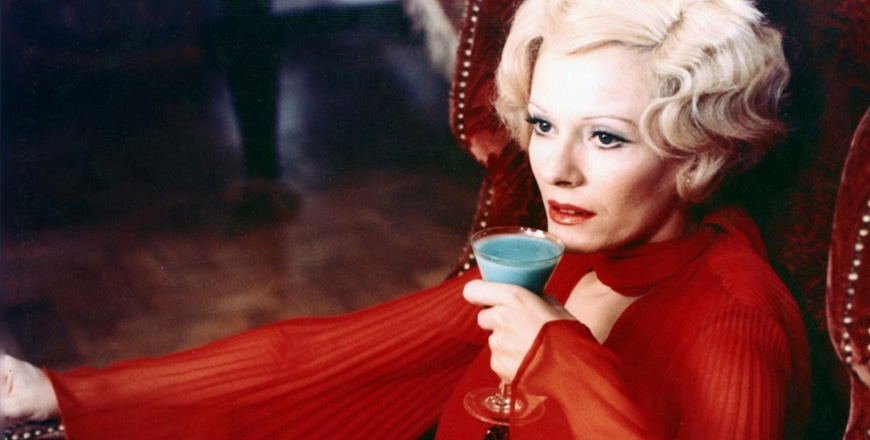Queer and Bright Red
Dorian Blue #film review #horror #vampires #lesbian #queer #lgbtq+

Released in 1971, the Belgian film Daughters of Darkness is an interesting example of queerness in the horror genre. I watched it on recommendation of my dad, a film guy who knows my love of everything lesbian and vampire. From the start, I was intrigued by the spare opening credits, white text on a black background. They are accompanied by a haunting, empty melody plucked out on electric guitar. The combination creates a feeling of emptiness and foreboding. When the title is shown, everything morphs to crimson red, staying that way until the beginning of the first scene, which plunges the viewer into deep indigo night.
A newlywed couple, Stefan and Valerie, are eloping together. They’re on a train to the beach town they are honeymooning and it’s already obvious that their relationship is shaky. Stefan is older than her and both are hesitant to fully profess their love. Valerie is also concerned about Stefan’s mother, who is part of the British aristocracy, and what she might think of their marriage. Stefan continues to dismiss all her concerns, quoting his mother, saying: “Stefan, we are different. That is God’s gift to us. We must never debase it.” Then, he kisses Valerie, trying to show her that he doesn’t care what his mother thinks. Though, she isn’t convinced. She makes him promise to call her when they reach the hotel.
Stefan and Valerie arrive in the town in the dead of winter. Their surroundings are gray and drab, with the sound of screeching sea birds the only constant. The inside of the hotel they’re staying in, however, is full of color. The concierge is the only other person in the hotel with them, as they are there very out of season. They eat dinner together in the empty dining room, a wide shot showing how vast the lines of empty tables are.
Shadowed in darkness, another car arrives. A woman clad in all black steps out from the back, complete with a mesh veil over her face. Immediately, she’s captivating. She has platinum blonde hair, pencil thin brows, and red lipstick, commanding the attention of the concierge. He’s shook to his core, as she looks exactly the same as she did twenty years before. Her name? Countess Elizabeth Bathory, the name of a real noblewoman who is said to have tortured and killed hundreds of people for her own pleasure. The Countess was styled to echo Marlene Dietrich, famous Old Hollywood actress. Dietrich was known for her androgynous style; it was also an open secret that she was bisexual.
Countess Bathory notices the couple in the dining room and sets her sights on them.
“Look how perfect they are,” she remarks to her companion, Ilona. Then, she becomes fixated on them.
It isn’t Stefan the Countess concerned with, though. Her attention is wholly on Valerie, who is already drawn to her. Valerie wears white throughout the film and is portrayed as naive, an obvious foil for the Countess, who exclusively wears black, red, and purple.
The bright and highly saturated color palette is contrasted with the dark desires of Elizabeth. In many ways, she’s the female manifestation of Dracula, also based on a mass-murdering historical figure. The film also has many plot beats that resemble Carmilla, a novel released twenty years prior to Dracula that tells the story of the vampire Carmilla seducing a noblewoman Laura.
In a heavy-handed, eroticized way,Daughters of Darkness explores the ties between being monstrous and being queer. Step by step, Elizabeth seduces Valerie, while also enacting carnage on the town. Everyone, including the mysterious Stefan, has dark urges within him, and Valerie is batted between them like prey in a cat’s paws. Though the convoluted, often labyrinthine, plot leaves a lot to be desired, the film delivers on aesthetics. Every shot is composed with a painter’s eye, influenced by Expressionism and Surrealism. The viewer, just like Valerie, is drawn into a web of despair and bloodlust